

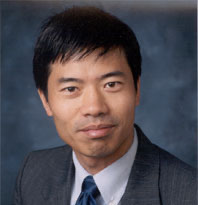
|
Prof. Mengchu Zhou
IEEE/IFAC/AAAS Fellow New Jersey Institute of Technology Title: Using Diverse Dark Knowledge in Sample-wise Multi-teacher Distillation for Accurate Object Recognition |
|
Abstract: Ensemble learning and knowledge distillation are widely studied as effective techniques in deep learning and gained such engineering applications as autonomous driving, Industry 4.0/5.0 and robotics. Their combination has achieved remarkable success in transferring various knowledge from multiple complex teacher networks to a simple student one. However, existing studies focus on classification diversity but overlook the crucial role of diverse dark knowledge in effective knowledge distillation. How to utilize such knowledge to improve the performance of a student network remains unexplored. To do so, we for the first time propose to apply diverse dark knowledge to sample-wise multi-teacher knowledge distillation. We train teacher networks on all samples to maintain accuracy and encourage diverse dark knowledge generation by applying constraints to the size and direction of output feature vectors. To reduce the impact of ensemble errors of teacher networks on the performance of a student one, we combine all teacher networks and their ensemble into multi-teacher networks. Furthermore, inspired by human educational experiences, we propose a relative confidence computing mechanism to select the optimal knowledge sample-wisely from each teacher network. The overall performance of the proposed method is verified by using it to perform multiple object recognition tasks and compare its results with the state-of-the-art ones. |
|
|
Bio: MengChu Zhou received his B.S. degree in Control Engineering from Nanjing University of Science and Technology, Nanjing, China in 1983, M.S. degree in Automatic Control from Beijing Institute of Technology, Beijing, China in 1986, and Ph. D. degree in Computer and Systems Engineering from Rensselaer Polytechnic Institute, Troy, NY in 1990. He joined the Department of Electrical and Computer Engineering, New Jersey Institute of Technology in 1990, and is now a Distinguished Professor. His interests are in intelligent automation, robotics, Petri nets, Internet of Things, edge/cloud computing, AI, and big data analytics. He has over 1200 publications including 17 books, over 800 journal papers including over 650 IEEE Transactions papers, 31 patents and 32 book-chapters. He is a recipient of Excellence in Research Prize and Medal from NJIT, Humboldt Research Award for US Senior Scientists from Alexander von Humboldt Foundation, and Franklin V. Taylor Memorial Award and the Norbert Wiener Award from IEEE Systems, Man, and Cybernetics Society, and Edison Patent Award from the Research & Development Council of New Jersey. He is a life member of Chinese Association for Science and Technology-USA and served as its President in 1999. He is Fellow of IEEE, International Federation of Automatic Control (IFAC), American Association for the Advancement of Science (AAAS), Chinese Association of Automation (CAA) and National Academy of Inventors (NAI). |
|
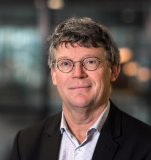
|
Prof. Ton Koonen
IEEE/OSA Fellow Eindhoven University of Technology (TU/e), the Netherlands Title: Optical wireless communication by dynamically steered high-capacity narrow beams |
|
Abstract: The need for wireless communication is growing fast, driven by the growing numbers of people who want to use broadband internet services, fast data file transfer, video streaming, etc., wherever they are, and this growth is also fueled by the upcoming internet-of-things. Wireless communication by radio techniques (such as WiFi and 5G) is running into its limits due to spectrum congestion within the (licensed) RF bands and crosstalk in densely populated areas. Optical wireless communication (OWC) by steered narrow beams can alleviate these problems, as it can provide ‘fiber-like’ high capacity at high user densities without causing crosstalk and experiencing congestion in the abundant optical spectrum available. Moreover, it is highly energy efficient as it needs to offer capacity only where and when needed, and it is free from electro-magnetic interference (EMI) issues. The keynote will review the state-of-the-art in OWC, present the pros and cons of beam-steered OWC, discuss how the key functions can be realized, and show how these have been implemented and validated in a bidirectional experimental OWC system featuring high-definition video streaming. |
|
|
Bio: Ton Koonen (IEEE F’07, OSA F’13) is emeritus professor in Eindhoven University of Technology (TU/e) since 2021, and has been full professor since 2001. From 2004 to 2021, he was chairman of the group Electro-Optical Communication Systems, and from 2012 to 2020 vice-dean of the department Electrical Engineering. From 2016 to 2019, he also was Scientific Director of the Institute for Photonic Integration at TU/e. Before 2001, he worked for more than 20 years in applied research in industry, amongst others in Bell Laboratories - Lucent Technologies. Ton Koonen is a Bell Labs Fellow (1998), IEEE Fellow (2007), and OPTICA (formerly OSA) Fellow (2013). In 2011, he received an Advanced Investigator Grant of the European Research Council on optical wireless communication. In Sep. 2021 at his valedictory lecture, he received the Dutch Royal distinction ‘Ridder in de Orde van de Nederlandse Leeuw’ (‘Knight in the Order of the Dutch Lion’). Ton’s current research interests are optical fiber-supported in-building networks (including optical wireless communication techniques, radio-over-fiber techniques, and high-capacity plastic optical fiber (POF) techniques), optical access networks, and spatial division multiplexed systems. |
|
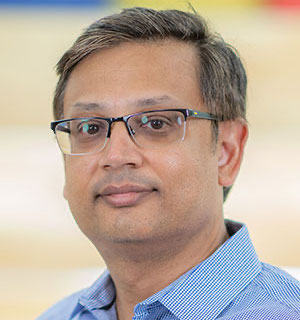
|
Prof. Krishna Narayanan
IEEE Fellow Texas A&M University, USA Title: Transformers for Compression and Communication |
|
Abstract: The emergence of generative AI systems and the resounding success of ChatGPT have generated unprecedented interest in the capabilities of large language models (LLMs). Researchers are exploring a myriad of applications for LLMs, reporting record-breaking performance in many areas. While a theoretical understanding of LLMs remains in its infancy, strong empirical evidence indicates that LLMs and large transformer-based architectures possess two remarkable properties - they excel at predicting the next token in a time series, and they possess in-context learning abilities. We study these properties in relation to two canonical tasks in information theory -compression and symbol estimation. First, we design a lossless compression algorithm for English text using a large language model in conjunction with arithmetic coding, demonstrating state-of-the-art performance. We review results showing that transformers have sufficient expressive power to emulate some popular compression algorithms. Next, we show that symbol estimation in wireless communications can be framed as an in-context estimation problem. We prove that, for a subclass of such problems, a single-layer softmax attention transformer computes the optimal solution in the limit of large prompt length. Furthermore, we empirically demonstrate the proficiency of multi-layer transformers in efficiently solving broader in-context estimation problems. An overarching goal of the talk is to review recent result on in-context learning as applied to compression and estimation. |
|
|
Bio: Krishna Narayanan is the Eric D. Rubin professor in the Dept. of Electrical and Computer Engineering at Texas A&M University. He recently held visiting positions at Qualcomm research and at the Simons Institute for Computing. His research interests are broadly in coding theory, information theory, signal processing, and machine learning with applications to wireless communications. He recently received the 2022 joint communications society and information theory best paper award, the 2020 best paper award in data storage from the IEEE communications society and a university-level distinguished teaching award in 2018. He has served as a lecturer at the North American, Australian, and East Asian schools on information theory. He was elected a Fellow of the IEEE for contributions to coding for wireless communications and data storage. |
|
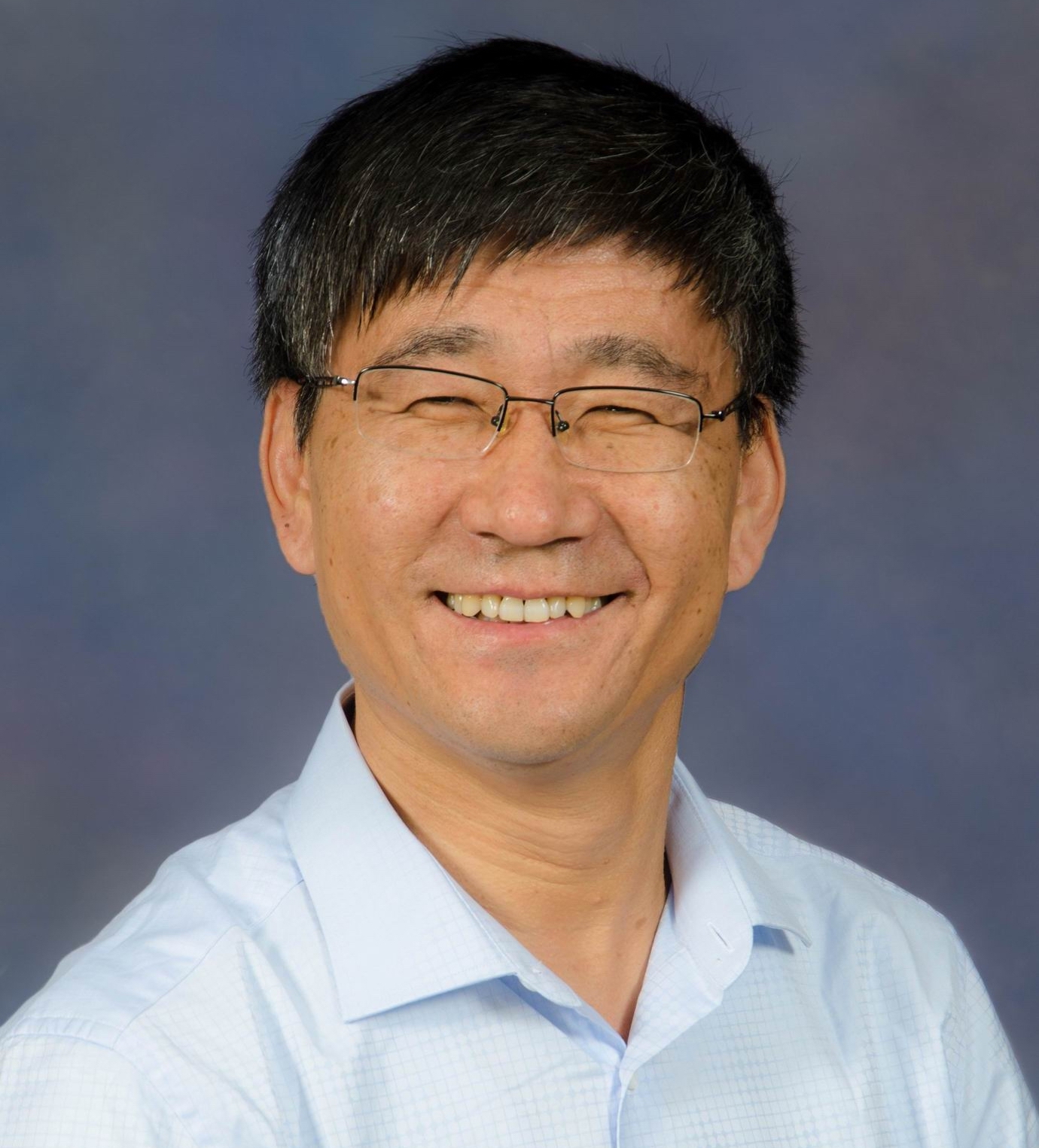
|
Prof. Yuguang Fang
IEEE/ACM/AAAS Fellow City University of Hong Kong, China Title: How Vehicles Provide Service Support for Smart Cities |
|
Abstract: Observing that the most popular and omnipresent things in a typical large city are vehicles. If a large number of vehicles are equipped with powerful capabilities of sensing, communications, computing, storage, and intelligence (simply SCCSI capability), such vehicles roaming around a city will automatically form a network of multi-dimensional resources for SCCSI services, potentially offering an economically attractive and sustainable alternative solution to realizing the vision of smart cities. In this talk, the speaker will discuss how to leverage connected SCCSI-empowered vehicles to take full advantage of both vehicular mobility and spectrum/computing opportunities to beef up the edge for various kinds of smart city operations and services. |
|
|
Bio: Dr. Yuguang “Michael” Fang received an MS degree in Mathematics from Qufu Normal University, Shandong, China in 1987, a PhD degree in Systems, Control and Industrial Engineering from Case Western Reserve University in 1994, and a PhD degree in Electrical and Computer Systems from Boston University in 1997. He joined the Department of Electrical and Computer Engineering at New Jersey Institute of Technology in 1998 as an assistant professor and then moved to the Department of Electrical and Computer Engineering at University of Florida in 2000 as an assistant professor, then was promoted to associate professor in 2003, full professor in 2005, and distinguished professor in 2019, respectively. Since August 2022, he has been a Hong Kong Global STEM Scholar and the Chair Professor of Internet of Things with the Department of Computer Science at City University of Hong Kong. Dr. Fang received many awards, including the US NSF CAREER Award (2001), US ONR Young Investigator Award (2002), 2018 IEEE Vehicular Technology Outstanding Service Award, 2019 IEEE Communications Society AHSN Technical Achievement Award, 2015 IEEE Communications Society CISTC Technical Recognition Award, 2014 IEEE Communications Society WTC Recognition Award, the Best Paper Award from IEEE ICNP (2006), 2010-2011 UF Doctoral Dissertation Advisor/Mentoring Award, and 2009 UF College of Engineering Faculty Mentoring Award. He held multiple professorships, including the Changjiang Scholar Chair Professorship (2008-2011), Tsinghua University Guest Chair Professorship (2009-2012), NSC Visiting Researcher of National Taiwan University (2007-2008), Invitational Fellowship of Japan Society for the Promotion of Science (2009), University of Florida Foundation Preeminence Term Professorship (2019-2022), University of Florida Research Foundation Professorship (2017-2020, 2006-2009), and University of Florida Term Professorship (2017-2021). He served as the Editor-in-Chief of IEEE Transactions on Vehicular Technology (2013-2017) and IEEE Wireless Communications (2009-2012) and serves/served on several editorial boards of journals, including Proceedings of the IEEE (2018-present), ACM Computing Surveys (2017-present), ACM Transactions on Cyber-Physical Systems (2020-present), IEEE Transactions on Mobile Computing (2003-2008, 2011-2016, 2019-present), IEEE Transactions on Communications (2000-2011), and IEEE Transactions on Wireless Communications (2002-2009). He served as the Technical Program Co-Chair of IEEE INFOCOM’2014 and the Technical Program Vice-Chair of IEEE INFOCOM'2005. He has actively engaged with his professional community, serving as a Member-at-Large of the Board of Governors of IEEE Communications Society (2022-2024) and the Director of Magazines of IEEE Communications Society (2018-2019). He is a fellow of ACM, IEEE, and AAAS. |
|
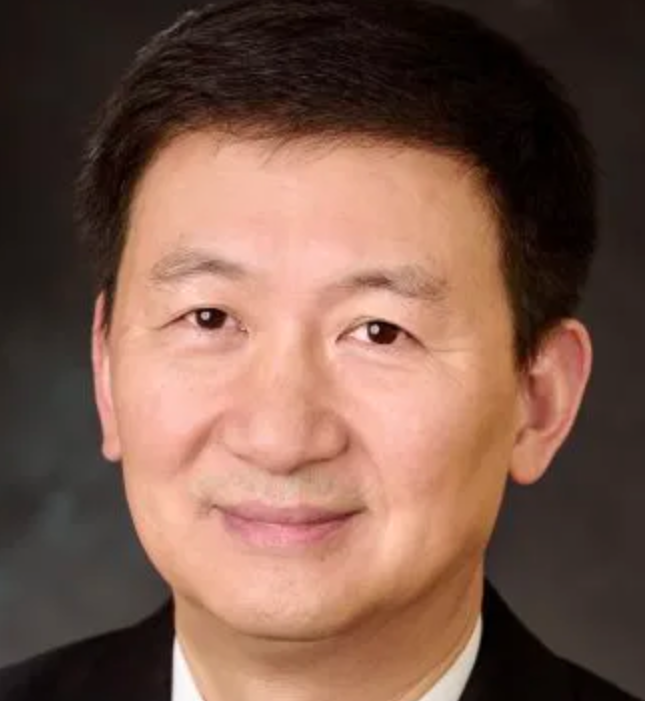
|
Prof. Yu-Dong Yao
CAE/NAI/IEEE/AAIA/AIMBE Fellow Stevens Institute of Technology Title: Deep Learning and Foundation Models in Wireless Research |
|
Abstract: Artificial intelligence, particularly deep learning, has made remarkable advances in recent years, achieving significant breakthroughs in the development of novel models, algorithms, and applications. As researchers in the field of wireless communications, we are committed to leveraging deep learning to identify emerging challenges, tackle new problems, and create innovative applications. In this presentation, we will report our recent work in deep learning research for designing future wireless communications systems, with a particular focus on using the foundation model approach to address a diverse set of wireless communications topics. |
|
|
Bio: Dr. Yu-Dong Yao has been with Stevens Institute of Technology since 2000. From 2007 to 2018, he served as Stevens’ department chair of electrical and computer engineering. Previously, Dr. Yao worked for Carleton University (Ottawa), Spar Aerospace (Montreal), and Qualcomm (San Diego). Dr. Yao’s research interests include information technologies, wireless communications, artificial intelligence, telehealth and AI medicine. Dr. Yao is a Fellow of IEEE (2011), National Academy of Inventors (2015), Canadian Academy of Engineering (2017), American Institute for Medicine and Biological Engineering (2021), and Asia-Pacific Artificial Intelligence Association (2022). |
|
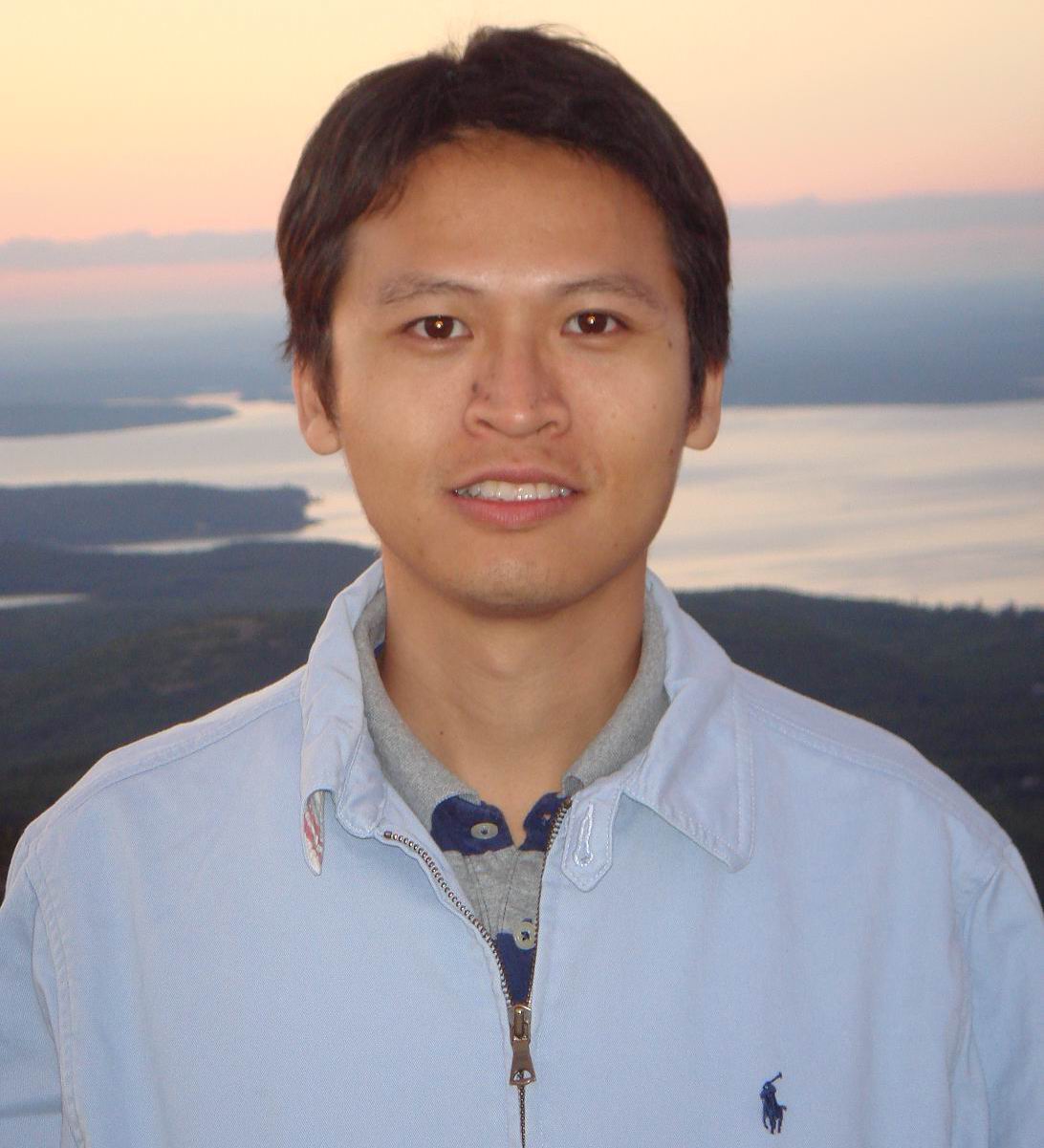
|
Prof. Zhi Wei
IEEE/AAIA Fellow New Jersey Institute of Technology Title: Model-based deep embedding for the analysis of single-cell RNA sequencing data |
|
Abstract: Single-cell RNA sequencing (scRNA-seq) promises to provide high resolution of cellular differences. However, the analysis of scRNA-seq data remains a statistical and computational challenge, due to the pervasive dropout events obscuring the high dimensional data matrix with prevailing ‘false’ zero count observations. Furthermore, subsequent differential expression analysis after clustering incurs the so-called “double use of data" problem, which will compromise type 1 error control for standard statistical tests. In this talk, I will introduce model-based deep autoencoders to address these issues. The proposed approaches leverage the most recent developments in feature representation learning in deep learning and feature selection in statistical learning, as well as prior information from domain scientists. Extensive experiments on both simulated and real datasets demonstrate that the proposed methods can boost clustering performance significantly while effectively filtering out most irrelevant genes. Our methods can generate more biologically meaningful clusters with enhanced interpretability as desired by biologists. |
|
|
Bio: Zhi Wei (IEEE Fellow) received the B.S. degree from Wuhan University, and the Ph.D. degree from the University of Pennsylvania, USA, in 2008. He is currently a Professor of computer science and statistics (joint appointment) with the New Jersey Institute of Technology. He has authored or coauthored more than 250 publications with 18,000 citations and H-index of 60. His research interests include statistical modeling, machine learning, and big data analytics. He has served as a PC Member for the IEEE ICDM, ACM SIGKDD, the IEEE Big Data, AAAI, and CIKM. He is an Editorial Board Member of the IEEE Internet of Things Journal, BMC Genomics, BMC Bioinformatics, PLOS ONE, and the IEEE Transactions on Computational Social Systems. |
|

|
Prof. Xin Jiang
The City University of New York, Staten Island, NY. Title: Mode vector modulation: A multidimensional Stokes vector modulation for multimode links |
|
Abstract: Polarization-based, direct-detection modulation formats, such as Stokes vector modulation (SVM) for single-mode links and mode vector modulation (MVM) for multimode links, have garnered significant attention due to their potential to improve the spectral efficiency and energy consumption of shorthaul communications. In this invited paper, we review the latest studies on SVM and MVM, including the optimized geometric constellation shaping and bit-to-symbol mapping, the accurate modeling of MVM propagation over few-mode fibers (FMFs), and the the experimental implementation of various SVM/MVM constellations. |
|
|
Bio: Dr. Xin Jiang received a Ph.D degrees in electrical engineering from Tsinghua University, Beijing, China. She is a professor of the department of Engineering and Environmental Science at the College of Staten Island, City University of New York. Prior joining the College of Staten Island, Dr. Jiang has worked in R&D and engineering department of multiple high-tech companies, involved in development of multiple state-of-the-art telecommunication systems, covering from transoceanic undersea systems, terrestrial long-haul systems, to the metro and access networks. Dr. Jiang’s current research interests include multi-dimensional optical communication networks, advanced modulation formats, high speed optical systems, and methods and apparatus to enhance the capacity of telecommunication systems and networks. She has authored and co-authored over 60 publications in leading peer-reviewed journals and conferences. Dr. Jiang is a member of the Optical Society of America and the IEEE. She has served on numerous conference program committees, including IEEE Photonics Conference (IPC), LEOS, and Wireless and Optical Communication Conference (WOCC), and was Conference Chair of the WOCC 2020. She has also served as Associate Editor of the Journal of Intelligent and Converged Networks |
|
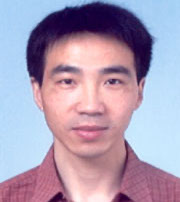
|
Prof. Qinglin Zhao
Macau University of Science and Technology, China Title: GRU-Based Winner Subcarrier Detection in Frequency Domain Contention for Wireless Networks |
|
Abstract: Single-carrier frequency domain contention (S-FDC) is an efficient wireless contention mechanism leveraging orthogonal frequency-division multiplexing (OFDM). In each S-FDC round, nodes randomly select and signal on one OFDM subcarrier while simultaneously listening to all subcarriers. Each node independently identifies the activated subcarrier with the smallest index, designating it as the winner. Accurate detection of the winner subcarrier is vital for S-FDC, yet it poses significant challenges due to unavoidable power leakage issues stemming from frequency asynchronization among nodes. In this talk, we introduce two gated-recurrent-unit (GRU)-based schemes that integrate the unique characteristics of S-FDC as domain knowledge to address this problem. The first scheme splits the subcarrier sequence into two segments and adaptively switches between them for winner subcarrier detection. The second scheme jointly considers both segments and refines the essential features for detection. Extensive simulation experiments validate the effectiveness of our schemes, highlighting the potential of deep learning to enhance the performance of FDC. |
|
|
Bio: Prof. Zhao Qinglin is with the School of Computer Science and Engineering at the Macau University of Science and Technology. He is a senior member of IEEE and a professional committee member of the China CCF Blockchain. His research interests include machine learning and its applications, blockchain and decentralized computing, IoT/wireless communication/wireless networks, cloud/edge computing, software-defined wireless networks, and quantum machine learning. He has published more than 80 papers in internationally renowned journals or conferences such as ACM/IEEE TON, TMC, TWC, TVT, TSG, TII, TGCN, etc., and has been granted more than 20 international patents (including 8 US patents). He serves as an Associate Editor for IEEE Transactions on Mobile Computing and IET Communications. |
|
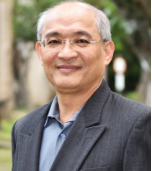
|
Prof. San-Liang Lee
National Taiwan University of Science and Technology Title: High-power PCG-DFB Lasers for Optical Interconnect and Optical Sensing |
|
Abstract: High-power DFB lasers with high efficiency and reliability are highly demanded for applications like co-packaged optics (CPO) for AI/HPC applications. light detection and ranging (LiDAR) systems, and free space optical (FSO) communication. Besides high output power, reduced relative intensity noise (RIN) and narrow linewidth are required for most of the applications. The demands for high-power lasers are dramatically increasing due to the needs of using one laser to feed many optical modulators in CPO based optical transceivers. Many groups have recently reported high-power, narrow linewidth, single-mode operation, and low-RIN semiconductor lasers by optimizing the lateral waveguide structure. We proposed to use multiple-section cascaded PCG-DFB structure to raise the photon density at the output end and thus enhance the output power. In this talk we will demonstrate experimentally the performance enhancement for PCG-DFB high-power laser with up to 10 grating segments and manifest the potential mechanisms leading the power boost and reduction in linewidth. |
|
|
Bio: Prof. San-Liang Lee received the Ph.D. degree in electrical and computer engineering from the University of California, Santa Barbara (UCSB), in 1995. He joined the faculty of the Department of Electronic and Computer Engineering, National Taiwan University of Science and Technology (NTUST) in 1988 and became a Full Professor in 2002 and a Chair Professor in 2019. He was the Vice President of the university from 2011 to 2014. He was the director of the research program on Silicon Photonics and Integrated Circuits sponsored by the National Science and Technology Council (NSTC), Taiwan from 2018 to 2023. He served as the Director of Photonic Division, Department of Engineering and Technologies, NSTC from 2021 to 2023. He is currently the dean of Industry-Academia Innovation College, NTUST. He was a visiting scientist in the Research Laboratory of Electronics, Massachusetts Institute of Technology (MIT) from 2010 to 2011. He served as the Electronic Section Editor of the SCI indexed Journal, Journal of the Chinese Institute of Engineers from 2007 to 2012. Since 2013, he serves as the Associate Editor of IEEE ACCESS Journal. He received the 2018 Outstanding Research Award from NSTC, and 2019 MOC Contribution Award from the Microoptics Group of Japanese Society of Applied Physics. His research interests include semiconductor optoelectronic components, photonic integrated circuits, nanophotonics, and optical networking technologies. He has published more than 300 referred papers in international journals and conferences and holds >30 patents. He is a Senior Member of IEEE. |
|
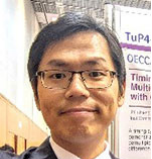
|
Dr. Jhih-Heng Yan
Chunghwa Telecom, Taiwan Title: Innovative Optical and Wireless Network (IOWN) – Paradigm shift of Communication and Computing Technology |
|
Abstract: Toward Beyond 5G and 6G era, a paradigm shift computing and communication capabilities is expected to empower the world with enhanced performance and sustainability. To achieve this goal and address the challenges, Innovative Optical and Wireless Network (IOWN) has proposed key technologies of all-photonic network (APN) and data-centric infrastructure (DCI) to improve not only the transmission capacity and latency but also the energy efficiency. These key technologies will support innovative use cases with high requirements and become the enablers of new digital services of next generation. |
|
|
Bio: Jhih-Heng Yan received his Ph.D. degree in electrical engineering from National Tsing Hua University, Taiwan. He was a visiting scholar with Georgia Institutes of Technology and a postdoctoral research fellow with National Tsing Hua University. He currently works at Chunghwa Telecom Laboratories in Taiwan as a Researcher and participates in major standardization forums toward innovative optical networks and technologies. His major research interests are optical access and transport networks, fiber-wireless integrated systems, and 5G RF/MMW mobile communications. |
|
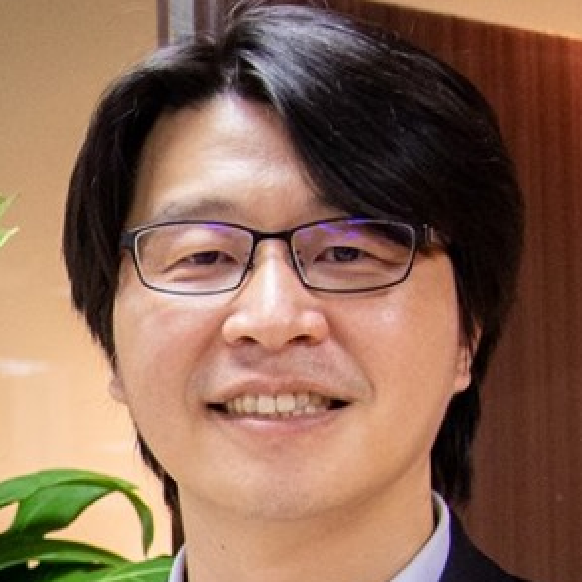
|
Prof. Peng-Chun Peng
National Taipei University of Technology, Taiwan Title: Optical-Wireless Integration for Empowering 6G Mobile Communication Networks |
|
Abstract: The upcoming sixth-generation (6G) mobile communication networks are expected to exhibit characteristics such as ultra-low latency, extreme communication speed, robust security measures, reliable connectivity, low energy consumption, and the ability to support a massive number of various connected devices. To realize the full potential of 6G mobile communication networks, the concept of optical-wireless integration is a key enabler to revolutionize the way data is transmitted, received, and processed. This talk will explore the emergence of optical-wireless integration, including radio-over-fiber and photonic-assisted wireless communication systems, as well as the integration of artificial intelligence (AI) and sensing technologies. Additionally, it will cover advancements in new radio access network architecture design, performance optimization strategies, enhanced radio access technologies, and free-space optical (FSO) communications for 6G mobile communication networks. |
|
|
Bio: Peng-Chun Peng received a Ph.D. degree from the Institute of Electro-Optical Engineering at National Chiao Tung University in 2005. He is a full professor and chairman of the Department of Electro-Optical Engineering at the National Taipei University of Technology. His research interests include optical communication systems, wireless access networks, the Internet of Things, and sensors. He has authored more than 140 journal articles and has been granted 9 U.S. patents. His publications have been cited over 3800 times (H-index: 31). He was invited to serve on the technical program committees of the Optical Fiber Communication Conference (OFC), OptoElectronics and Communications Conference (OECC), International Topical Meeting on Microwave Photonics (MWP), Asia Communications and Photonics Conference (ACP), and Wireless and Optical Communications Conference (WOCC). |
|